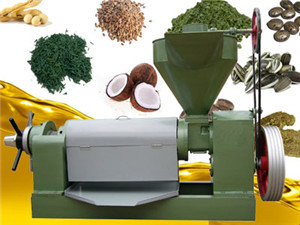
Sunflower oil is a staple in both daily life and various industries. In the food sector, it is highly favored for its light flavor, high smoke point, and rich vitamin E content, making it ideal for cooking, baking, and salad dressings. On the industrial front, sunflower oil serves as a raw material for bio - diesel production and the manufacturing of cosmetics. Given its wide - ranging applications, the demand for efficient sunflower oil extraction machines has been on the rise.
This article aims to demystify the working principles of two main types of sunflower oil extraction machines, the press - type and the solvent - extraction type, enabling you to make an informed decision for your business.
The press - type extraction machine operates on a mechanical principle. Sunflower seeds are fed into the machine, where a screw or a hydraulic press applies pressure to squeeze out the oil. This process is relatively simple and straightforward. According to industry data, the oil extraction rate of a well - designed press - type machine can reach up to 40 - 45%.
One of the significant advantages of the press - type machine is its ability to produce high - quality, pure oil. Since it does not involve the use of any chemical solvents, the oil retains its natural flavor and nutritional value. However, the extraction efficiency is relatively low, and it may leave a relatively high oil content in the meal, around 6 - 8%.

The solvent - extraction type machine uses a chemical solvent, usually hexane, to extract oil from sunflower seeds. The seeds are first crushed and then mixed with the solvent. The solvent dissolves the oil, and the mixture is then separated through evaporation to obtain the oil. This method can achieve a high extraction rate, often exceeding 90%.
The solvent - extraction method is highly efficient and can handle large - scale production. However, the oil produced may require further refining to remove any residual solvent, which can affect the flavor and nutritional value to some extent. Additionally, the use of chemical solvents poses certain safety and environmental risks.

The choice between the two types of extraction machines depends on several factors, mainly the production scale and the quality requirements.
| Machine Type | Suitable Production Scale | Suitable Scenarios |
|---|---|---|
| Press - Type | Small to medium - scale production (less than 50 tons per day) | Producing high - quality, pure oil for niche markets, such as organic food production and high - end restaurants |
| Solvent - Extraction Type | Large - scale production (more than 50 tons per day) | Meeting the mass market demand for sunflower oil, such as for food processing industries and bio - diesel production |
A small - scale organic farm in Europe chose a press - type extraction machine. By producing high - quality, pure sunflower oil, they were able to target the high - end organic food market. Their oil was well - received, and they saw a significant increase in profits within a year.
On the other hand, a large - scale food processing company in Asia installed a solvent - extraction type machine. With its high extraction efficiency, they were able to meet the growing demand for sunflower oil in the market and expand their business rapidly.

In conclusion, both press - type and solvent - extraction type sunflower oil extraction machines have their own advantages and disadvantages. The press - type machine is suitable for those who prioritize oil quality and operate on a small to medium scale, while the solvent - extraction type is more appropriate for large - scale production aiming at mass - market supply.
When choosing a sunflower oil extraction machine, consider your production scale, quality requirements, and budget. If you need more information or have specific questions, please feel free to contact us at [Contact Information]. We are committed to helping you select the most suitable machine for your business needs.


